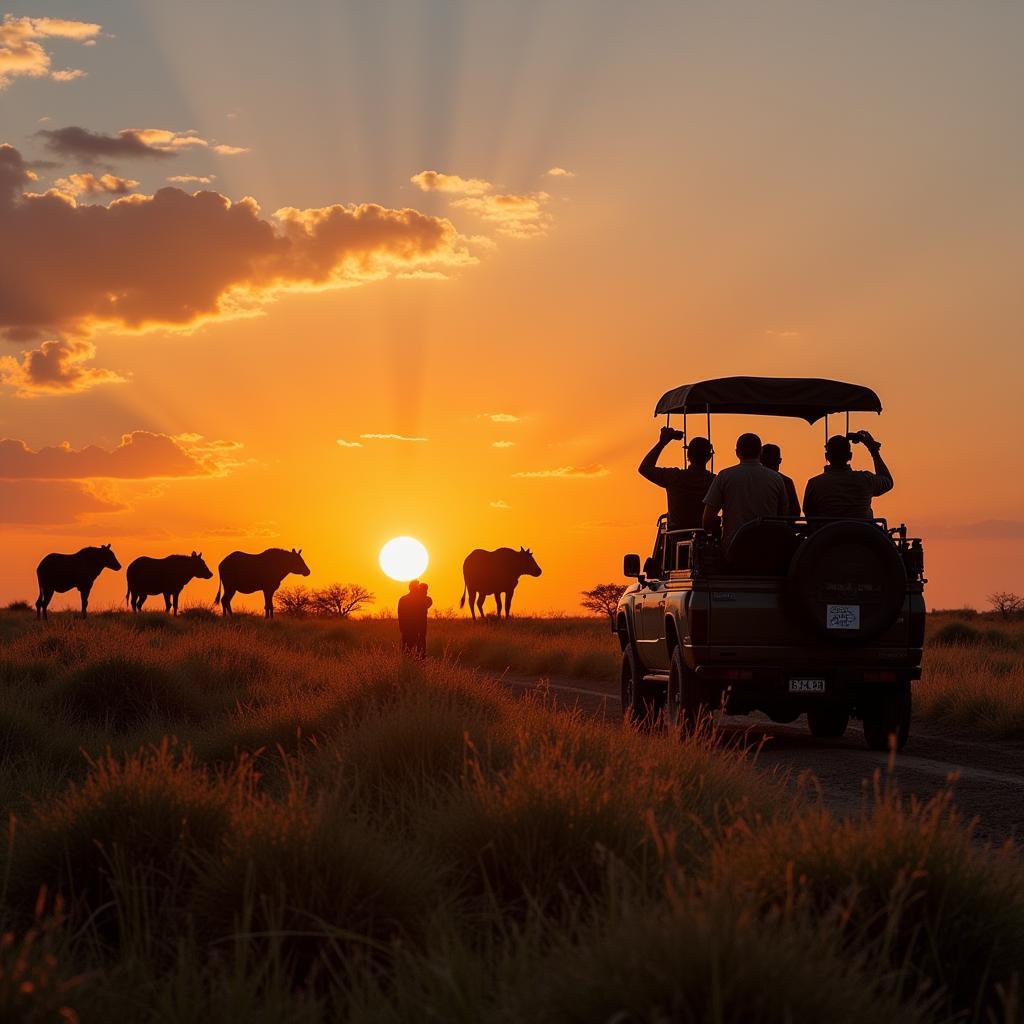African Camels: Unveiling Fascinating Facts About the Ships of the Desert
Camels are synonymous with the African desert landscape, effortlessly navigating the vast, arid terrains. These remarkable creatures, often called “ships of the desert,” have adapted to survive the harshest conditions, playing a vital role in the lives of people across the continent for centuries. But how much do you really know about African camels? Let’s delve into some fascinating facts about these resilient animals.
Two Types of African Camels: One Hump or Two?
Africa is home to two distinct species of camels: the dromedary camel and the Bactrian camel. The dromedary camel, easily identifiable by its single hump, is the most common type found in Africa. These camels are primarily found in the northern and eastern regions of the continent. While the two-humped Bactrian camel is not native to Africa, small populations can be found in countries like Eritrea and Somalia.
Not Just for Transportation: The Multifaceted Role of Camels in Africa
While often associated with transportation, camels in Africa contribute far more to the communities they live alongside. These animals are a vital source of milk, meat, and wool. Camel milk, rich in nutrients and with a slightly salty taste, is a staple in many cultures. Camel meat, though not as common as other livestock, is a valuable source of protein, particularly in arid and semi-arid regions. The durable wool produced by camels is transformed into clothing, rugs, and tents, providing warmth and shelter.
Built for Survival: Remarkable Adaptations of African Camels
The ability of African camels to thrive in challenging environments is a testament to their incredible adaptations. Their humps, far from being filled with water as commonly believed, store fat which can be metabolized for energy and hydration when resources are scarce. Their large, flat feet act as natural snowshoes, allowing them to navigate sandy terrain with ease. Long eyelashes and the ability to close their nostrils protect them from harsh winds and blowing sand.
Beyond the Stereotype: Unveiling the Social Side of Camels
Contrary to their stoic appearance, camels are social animals, living in herds led by a dominant male. They communicate through a variety of vocalizations, including grunts, moans, and even a high-pitched “warning” call. Camels are known for their strong memory, remembering routes and water sources over vast distances.
African Camels: Facing Threats in a Changing World
Despite their resilience, African camel populations face various threats, including habitat loss due to desertification and climate change, competition for resources with livestock, and disease outbreaks. Conservation efforts are crucial to protect these iconic animals and their vital role in African ecosystems and cultures.
Did You Know? Unveiling Fun Facts About African Camels
- A camel’s hump can weigh up to 80 pounds!
- Camels can drink up to 30 gallons of water in just 13 minutes!
- These incredible creatures can live for 40 to 50 years!
 Camel Caravan Crossing the Desert
Camel Caravan Crossing the Desert
The Future of African Camels: A Shared Responsibility
Understanding and appreciating these fascinating facts about African camels is the first step towards ensuring their conservation. By supporting sustainable practices, promoting responsible tourism, and raising awareness about the challenges they face, we can contribute to a future where these iconic animals continue to thrive across the African continent.
FAQ: Common Questions About African Camels
Q: What is the difference between a dromedary and a Bactrian camel?
A: The most obvious difference is the number of humps. Dromedary camels have one hump, while Bactrian camels have two.
Q: Why are camels called “ships of the desert”?
A: Camels are called “ships of the desert” due to their ability to travel long distances across challenging desert terrain, carrying heavy loads and enduring harsh conditions.
Q: What do African camels eat?
A: African camels are herbivores and primarily feed on grasses, leaves, and desert vegetation.
Q: How long can a camel go without water?
A: Camels are incredibly adapted to desert life and can survive for extended periods without water, sometimes up to two weeks.
Q: Are African camels endangered?
A: While not currently classified as endangered, certain camel populations face threats and are considered vulnerable.
Explore More About African Wildlife
Interested in learning more about the fascinating wildlife of Africa? Check out these articles:
By understanding and appreciating the unique adaptations and cultural significance of African camels, we can contribute to their conservation and ensure that these remarkable creatures continue to roam the African landscapes for generations to come.
Need more information on African camels or other aspects of African Life? Contact us at +255768904061, email us at kaka.mag@gmail.com, or visit our office in Mbarali DC Mawindi, Kangaga, Tanzania. Our dedicated team is available 24/7 to assist you.

